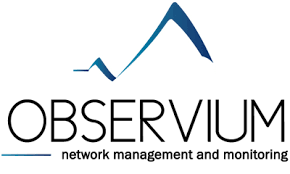Observium CE — Community Edition of Network Monitoring
General Information
Observium CE (Community Edition) is the free release of Observium, a network and system monitoring platform. It’s built around SNMP discovery and automatic graphing, aiming to reduce the manual setup work. The community version is trimmed down compared to the commercial one but still provides solid visibility into switches, routers, servers, and virtual machines. Many admins use it as a quick way to build a monitoring dashboard without the heavy configs that tools like Nagios often require.
How It Works
Observium automatically discovers devices that support SNMP, pulls metrics, and creates performance graphs using RRD. It works best with switches, routers, firewalls, and servers where SNMP or standard protocols are available. The web interface is the central place to browse graphs, see device status, and check trends. While CE doesn’t include all enterprise features (like alerting), it remains strong in automated discovery and graph generation.
Main Functions
| Function | What It Does |
| Automatic discovery | Finds devices via SNMP without complex configs. |
| Graphing | Builds RRD-based performance graphs for interfaces and services. |
| Multi-vendor support | Works with Cisco, Juniper, Linux, Windows, and many others. |
| Web UI | Central place to view device status and performance. |
| Community-driven | Free to use, updated twice a year. |
| Lightweight setup | Easier to get running compared to more manual systems. |
Installation Notes
On Ubuntu/Debian:
1. Install dependencies: apt install snmpd rrdtool mariadb-server apache2 php.
2. Download the CE release from the Observium site.
3. Extract into /opt/observium.
4. Create the database and configure config.php.
5. Run ./discovery.php and ./poller.php to begin device discovery.
6. Access the web UI at http://server/observium.
Updates in CE are manual — admins download the latest community snapshot twice per year.
Everyday Use
Observium CE is often chosen when admins want a “set it and forget it” monitoring dashboard for network gear. Once SNMP credentials are set, the system builds graphs automatically. It’s handy for capacity planning (checking bandwidth growth over time), spotting overloaded interfaces, and getting a historical view of CPU, RAM, or disk usage.
Limitations
The CE edition lacks the full alerting system, advanced APIs, and some integrations found in the professional version. It’s also updated less frequently. For setups needing alerts or tighter automation, admins often move to Observium Professional or integrate CE with another tool that handles notifications.
Comparison
| Tool | Platforms | Strong Side | Best Use |
| Observium CE | Linux | Auto-discovery, graphing, easy setup | SMBs, simple dashboards |
| Observium Pro | Linux | Alerts, APIs, frequent updates | Enterprises needing more control |
| Cacti | Linux/Windows | Manual but flexible graphing | Custom monitoring setups |
| Zabbix | Multi-platform | Alerts, dashboards, automation | Full enterprise monitoring |

